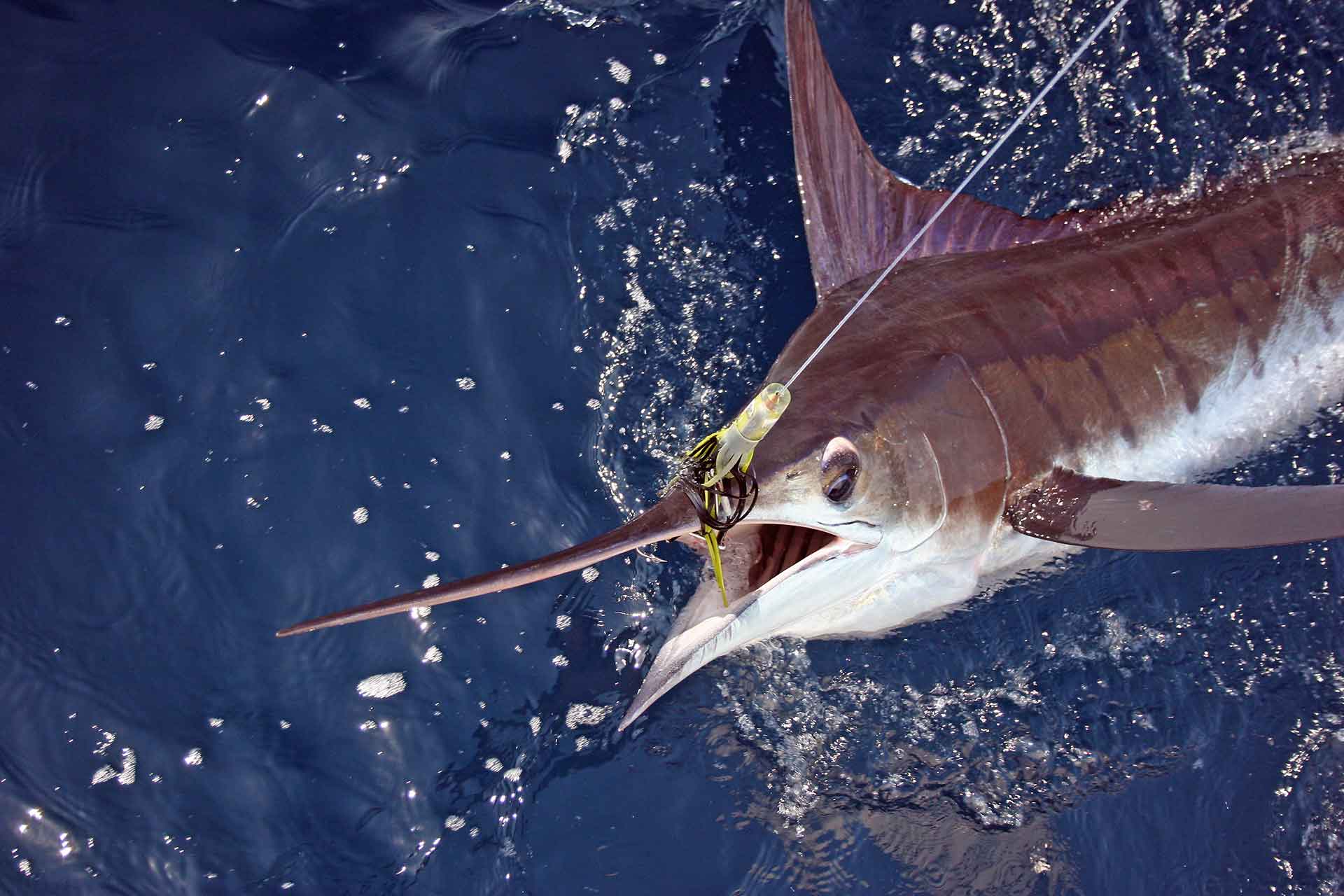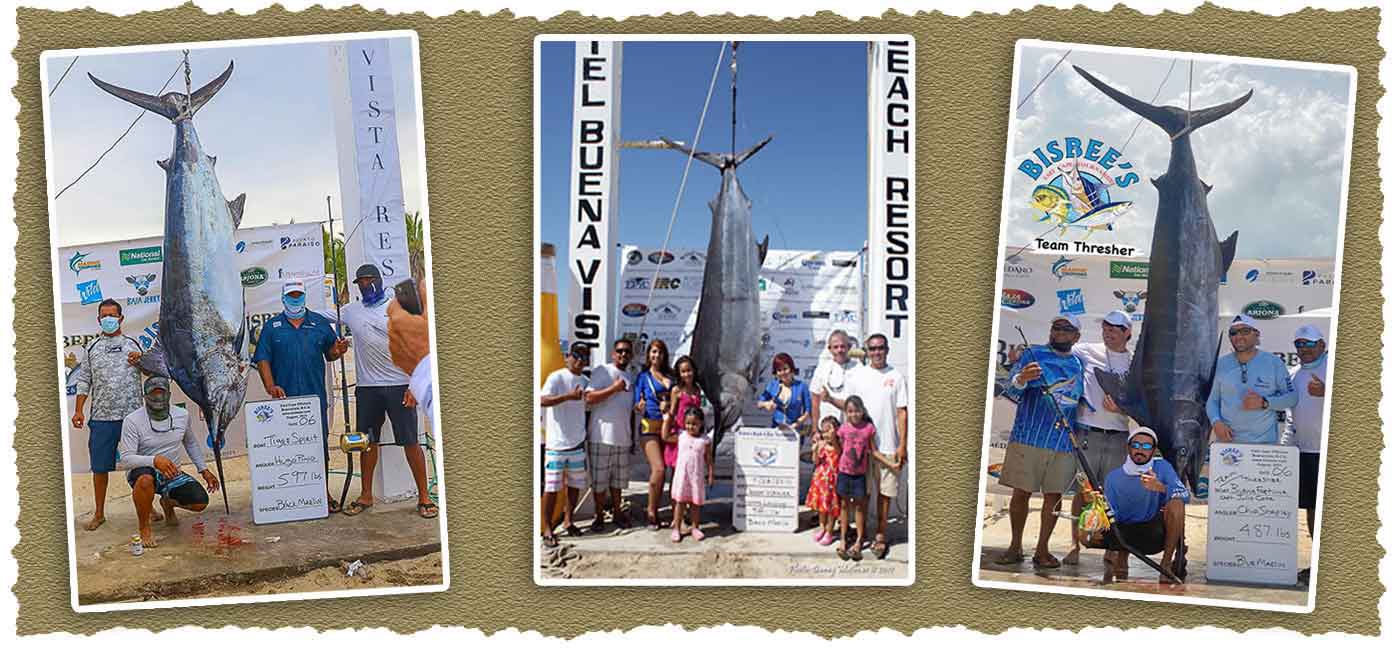

There's been a strange turn in the tide when it comes to Marlin fishing here in southern Baja, specifically here in Cabo San Lucas. For as long as we can remember, Blue Marlin have always been the 'big girls' around here. Seems like every time a really big Marlin was caught, it was a Blue. Lately, that's changed. This year appears to be bringing a changing of the guard with more big fish getting hooked than we've seen in years.... and they're not just big and blue... they're big and BLACK!!
To better understand why we're so impressed by the numbers and sizes of Black Marlin being caught here in Los Cabos, let's take a look at the two species and see what makes them tick.
DIFFERENCES BETWEEN BLUE AND BLACK MARLIN
Indo-Pacific Blue Marlin, Makaira Nigricans, are blue-water pelagic species that are predominantly found in open waters. They use structure as navigational aids in their migratory paths but do not remain on that structure for significant periods of time. Instead, they roam from place to place looking for schooling bait fish upon which to feed. Black Marlin, Makaira Indicas, on the other hand, are structure hugging fish that tend to stay on pinnacles and reefs – often remaining on those spots for weeks or months at a time. While little is known about their migratory paths, the consensus is that they travel relatively short distances in comparison to Blues.
So what does all that mean? Generally, when fishing for Blues you're going to be covering a whole lot of water looking for signs of life, temperature or current breaks. While structure plays a role in finding them it's usually because that's where you'll find their prey, not that they'll remain there waiting for more to come by. When the food moves, so does the Blue Marlin. When fishing for Blacks the key is to find and target structure and stay on it – regardless of whether you're trolling live, dead or artificial baits. Unlike Blues, Blacks will stay on structure and ambush-attack schools of bait fish or tuna that pass, but once those schools move on, Blacks will stick around.
BLACK MARLIN EAT DIFFERENTLY
Blacks are known to feed on a wide variety of reef fish... something that Blues don't do. Often times, Blacks taken to the scales and hung for weight measurements will reveal a strange diet when their stomach contents are examined. It's not unusual to find remnants of reef dwelling species like Pargo and Snapper as well as crustaceans like lobster. Feeding habits like that point to one thing.... Blacks can and do hang around structure picking away at reef species that other billfish won't.
Here in the waters off of Cabo San Lucas we have loads of canyons, reefs and pinnacles. Places like the inner and outer Gorda Bank, Iman Bank, Destiladeros and the like provide the perfect environment for Black Marlin. We venture to these spots often and are happy to report that they're here in larger numbers than historically seen.
WHY MORE BLACK MARLIN ARE BEING CAUGHT OFF LOS CABOS (we think!)
So, why more big Blacks than big Blues of late? We don't really know but common sense tells us that increased pressure on our fishery from commercial fishing operations is taking it's toll on Blue Marlin populations. That impact could be direct, like taking them on long lines or purse seiners, or as a result of a reduction food as in bait fish. As mentioned earlier, Blues are out cruising open water looking for food to eat... if there's no significant concentrations of prey, they'll move on to more productive waters and those waters may be too far away for our fleets to reach. Blacks, on the other hand, have it a bit easier as they'll forage on fish that hold close to structure while waiting for that next big meal to come swimming past. For the past several years, that's held true with Blacks staying in striking distance of our fleet.

OKAY, PROVE IT!
Well, as the old adage goes, a picture is worth a thousand words, above you'll see a few photos of some big Blacks recently caught here in Cabo. Those represent the recent history of tournament winners in Los Cabos. In 2020, the Bisbee's Los Cabos Offshore winner was a 514 pound Black Marlin with second going to a 424 pound Black, third place... a 330 pounder, also a Black Marlin. This year's Bisbee's East Cape Offshore held in August, 2021 helps our case as well. First place went to Hugo Pino aboard Tiger Spirit with his impressive 597 pound Black. Blue Marlin made a showing as well for second place at 487 pounds. Rounding out the top 3 was another Black, this one pushing the scale up to 410 pounds. So, out of 6 top fish 5 were Blacks.
We could add to the tally reports we get from fisherfolk we know that have their own special spots for Black Marlin – many tell us about big fish.... 500+ pound models they caught and released with multiple fish per boat, per day not all the uncommon. We've heard rumors of grander plus fish that just proved to much for the gear being used – working 30 and 50 wide reels when pulling 130's would have been the right setup! Sometimes big fish jump on when you're not expecting them. We've seen some big, big fish ourselves. Caught a few, too. Lots of them were Black Marlin.
Many we're absolutely wrong about the trend of Black Marlin being the more frequent tournament winners now and into the future here in Los Cabos. But with as many years as we've spent on the water here, maybe we're absolutely right.